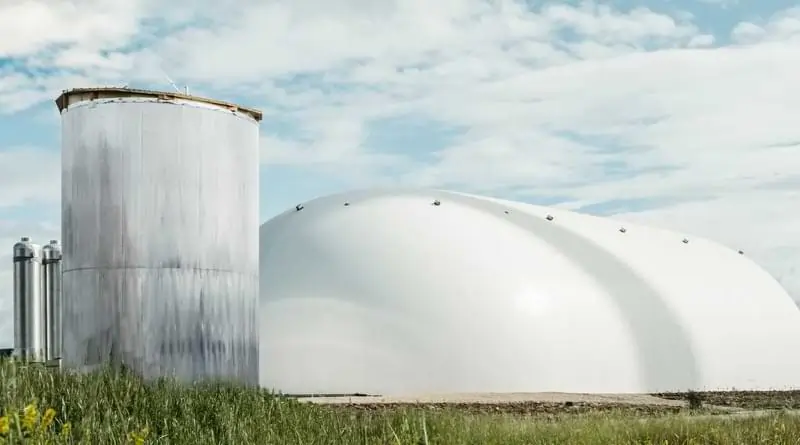
NTPC to Install India’s First CO2 Energy Storage Project in Karnataka
Carbon dioxide (CO2) compression-based energy storage technology will be making its debut in India with NTPC’s decision to deploy the country’s first CO2 battery at Kudgi, Karnataka. NTPC will be installing this CO2 battery in collaboration with Italy’s Energy Dome S.p.A and Indian turbine manufacturer, Triveni Turbine Ltd.
CO2 energy storage technology is a recent alternative to conventional Energy Storage Systems (ESS), such as Battery ESS (BESS) and Pumped Hydro Storage Projects (PSPs).
How Does a CO2 Energy Storage System Work?
CO2 Energy Storage technology makes use of change in the state of Carbon dioxide. Carbon dioxide exists in gaseous state at normal temperature and pressure conditions, however when compressed under approximately 70 atmospheric pressure (70 atm) while passing through a heat exchanger, CO2 gas can be liquefied and then kept in liquid state under pressure at ambient temperatures. The heat exchanger first uses power from a source, typically excess power from a green generation unit such as a solar power plant. This electrical energy is used to remove energy / heat from CO2 gas in order to liquify it and this energy is stored for future use. At a time of high energy demand, ie. when additional power is required to be supplied, this stored energy is used to de-pressurise the liquified CO2 and convert it back into the original gaseous form. This CO2 gas then turns a turbine to generate electricity. After this, the gaseous CO2 is repurposed to continue this cycle.
Major Advantages of CO2 Energy Storage Technology
As per Energy Dome, the major advantage of CO2-based ESS is that it doesn’t require critical minerals such as Lithium or Cobalt. Moreover, unlike BESS, this new technology does not involve any complex electrochemistry, thereby reducing scope of performance degradation over long-term deployment. With the current technologies, BESS systems have an annual performance degradation of about 1-3% on an average. However, concrete data regarding CO2-based ESS’ performance degradation is not available, as the world’s first such project was developed by Energy Dome only recently, in Sardinia, Italy in June 2022.
NTPC’s Kudgi CO2 Compression-based Energy Storage Project
NTPC Energy Technology Research Alliance (NETRA), R&D arm of NTPC, is setting up a 160 MWh CO2-based ESS at Kudgi, Karnataka. NETRA will deploy Energy Dome’s technology at this plant, and Triveni Turbine will also collaborate with NETRA to execute this project.
While speaking of this project, Mr. Claudio Spadacini, Founder & CEO, Energy Dome, said, “Our collaboration with Triveni Turbines and NTPC to deploy the CO2 Battery achieves this by advancing NTPC’s decarbonization goals and round-the-clock (RTC) power delivery while strengthening India’s local supply chain through domestic sourcing”.
During the recently concluded India Energy Week 2025, NTPC CMD, Mr. Gurdeep Singh, said, “We have started working on compressed CO2 energy systems for long-term storage of Renewable Energy. For long-term, we currently have pumped storage systems, but they are location based”. He said that compressed CO2 ESS have the advantage that they can be developed within Renewable Energy (RE) parks.


